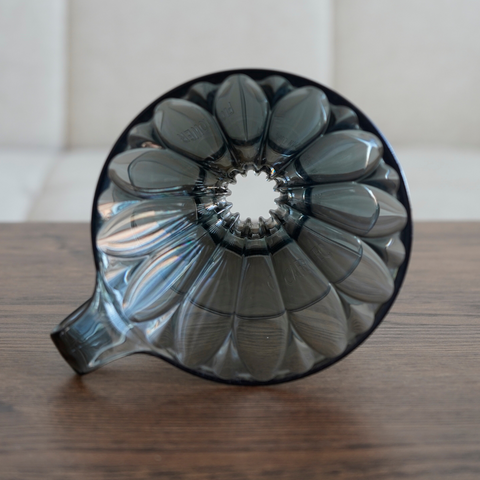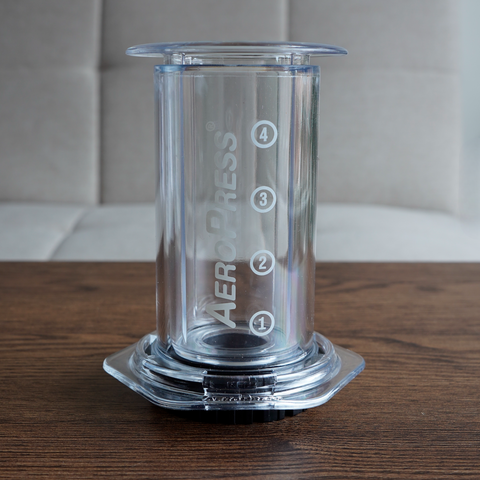
Is Tritan the next gen of plastic coffee brewers?
Share this article
In the fast paced and ever evolving world of coffee gear, the recent development for the perfect material that combines durability and safety has led to significant innovations.
Tritan is the newest material, a type of plastic known for its remarkable properties making it a serious competitor for other coffee brewers and food equipment.
Unlike traditional plastics used in coffee brewers, Tritan stands out for being durable, BPA-free, and is capable of withstanding daily use without compromising safety or it's aesthetic appeal.
What is Tritan?
Tritan is a copolyester developed by Eastman Chemical Company, marking a new era in material science. This plastic is fundamentally different from others like polycarbonate, which have raised health concerns due to BPA content.
Tritan's composition excludes BPA, bisphenol S (BPS), and all other bisphenol compounds, making it a safer choice for food contact products. Its adoption in the coffee gear industry, including products like the Tricolate, Cafec Flower Dripper, and the new Clear AeroPress, is testament to its superior qualities. These products benefit from Tritan's clear, shatter-resistant, and heat-resistant characteristics, ensuring both safety and performance.

Tritan in Coffee Gear
Given the current understanding, Tritan is considered safer than many other plastics, especially those containing BPA.
For those particularly cautious about chemical exposure—such as pregnant individuals, young children, or those trying to conceive—opting for alternative materials like glass, stainless steel, or silicone might be more suitable.
Tritan represents a significant advancement in materials used for coffee gear, offering a blend of durability, safety, and clarity that is hard to match. However, as with any material, it is essential to stay informed about ongoing research and best practices for use to ensure that your coffee experience remains both enjoyable and safe.
How Tritan Compares to Glass, Ceramic and Metal Coffee Brewers
When it comes to materials of coffee drippers, Tritan sits in a sweet spot between strength, safety and usability. Glass, ceramic and stainless steel have all been staples in the coffee gear world for years but the materials used determin how the drippers and coffee brewers are used. It doesn't make a lot of sense to have a glass dripper for a travel dripper but Tritan on the other hand is perfect for travel.
That being said each material has it's own thermal properties, interactions with coffee filters and shape properties, all these variables add up to create a unique flavour profile for that particular dripper.
| Material | Durability | Clarity | Heat Retention | Safety | Taste Neutrality |
|---|---|---|---|---|---|
| Tritan | ★★★★☆ (Impact-resistant and shatterproof) | Crystal clear | ★★☆☆☆ | BPA & BPS-free, FDA & NSF certified | Neutral |
| Glass | ★★☆☆☆ (Fragile but elegant) | Perfect clarity | ★★★☆☆ | Safe | Neutral |
| Ceramic | ★★★☆☆ | Opaque | ★★★★☆ | Safe | Slight flavour insulation |
| Stainless Steel | ★★★★★ | Opaque | ★★★★★ | Safe | Can slightly mute acidity |
Is Tritan Safe for Hot Coffee?
Yes, Tritan has been rigorously tested for use with hot liquids and is widely recognised as food-safe. According to Eastman Chemical Company (the creators of Tritan), this material contains no BPA, BPS, or bisphenol compounds. It’s passed FDA and NSF certification for food contact, meaning it’s safe for everything from baby bottles to coffee brewers.
Tritan can comfortably handle boiling water temperatures (up to around 100°C) without deforming or leaching chemicals. It’s also dishwasher-safe, withstanding repeated heat cycles without clouding or becoming brittle, one of the main reasons it’s become the go-to material for brands like AeroPress, Cafec and Tricolate.
That said, no plastic lasts forever. Over time, micro-scratches and detergent wear can dull the surface. If you’re someone who brews daily, it’s worth replacing your brewer after a few years or following the manufacturer’s recommended lifespan.
Maintenance and Longevity: How to Care for Tritan Gear
Tritan is tough, but it still deserves some love. To keep it looking crystal clear and performing perfectly:
- Wash with mild soap and warm water.
- Avoid abrasive sponges or steel wool that can scratch the surface.
- Never boil Tritan directly over an open flame or place it on a stovetop.
- If you’re using a dishwasher, top rack only is safest.
- Always follow the manufacturer’s cleaning and maintenance instructions for your specific brewer.
With proper care a Tritan coffee brewer can easily outlast many glass or ceramic alternatives, especially if you’re using it for travel or everyday brewing.
Future of Coffee Brewers
I truely believe that as plastics and industries focus more on innovation we will see this drip down into the coffee equipment industry, for now we will be seeing more coffee drippers and brewers built using Tritan. In the future however I am sure we will find new and better materials that we can use.




